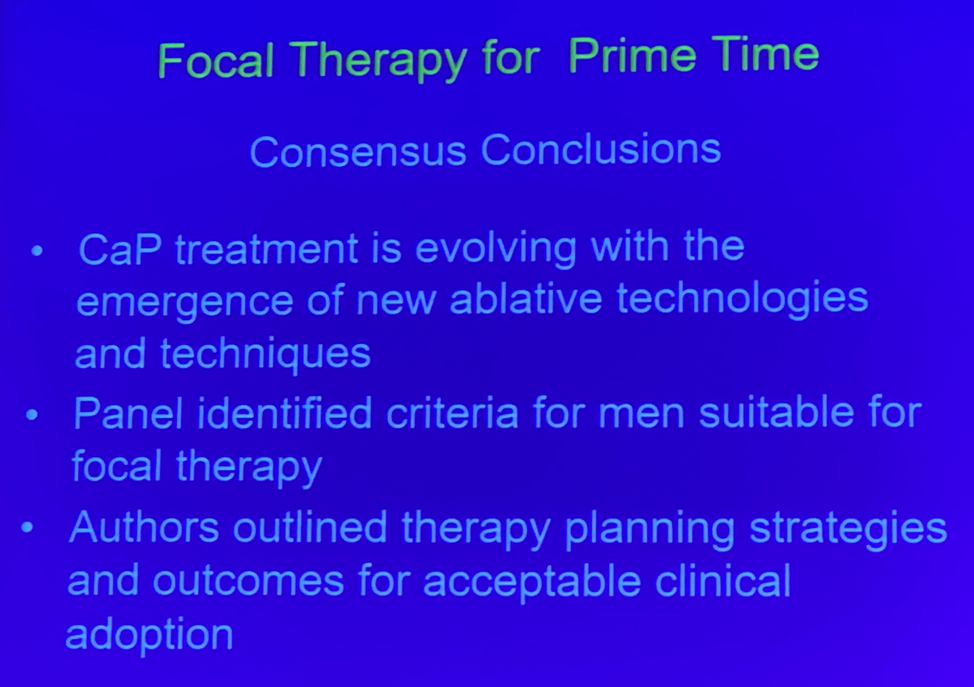Are we repeating history with regards to focal therapy? The current landscape of focal therapy includes high-frequency focused ultrasound (HIFU), cryoablation, laser ablation, and vascular-targeted photodynamic therapy. Dr. Miles acknowledges that strong evidence for any of these techniques is currently lacking in the published literature. There are several small, single-center cohorts, predominantly out of Europe, with favorable results from both an oncologic and functional standpoint. At this time, in order to move forward with these technologic advances, expert consensus on focal therapy is a necessity (graphic). Dr. Miles points out that focal therapy has already penetrated lay discussions of prostate cancer and is available both from private practices and top academic institutions. Since the door to prime-time focal therapy has already been opened, we should proceed through and assess these technologies along the way with ongoing research.

Focal Therapy for Research Only
Many questions surrounding the feasibility, safety, and efficacy of focal therapy have not yet been answered, so Dr. Ross believes it should remain firmly in the research setting for now. If we continue to limit use to research protocols, we can arrive at more definitive conclusions earlier than if we attempt to interpret poorly controlled retrospective studies at a later time. It is not simply a matter of the therapeutic techniques but also our ability to identify proper candidates. A critical component of effective focal therapy is the identification of targetable lesions using noninvasive imaging, but the currently available techniques are not yet reliable enough for prime time. Tumor biology, specifically the multifocality of prostate cancer, is another problem for focal therapy. Remarkable genetic heterogeneity is demonstrated between and within prostate cancer lesions, requiring a deeper understanding before committing to the efficacy of focal therapy1. The time for focal therapy is near, but we should continue to confine it to a research setting until the above issues have been addressed and efficacy is demonstrated.


Presented by: Brian Miles, MD, Department of Urology, Weill Cornell Medical College, New York, NY, and Ashley E. Ross, MD, Ph.D., Texas Urology Specialists, Dallas, TX
Written by Justin T. Matulay, MD, Urologic Oncology Fellow and Ashish M. Kamat, MD (@UroDocAsh), Professor, Department of Urology, Division of Surgery, The University of Texas MD Anderson Cancer Center, Houston, TX at the 13th Update on the Management of Genitourinary Malignancies, The University of Texas (MDACC - MD Anderson Cancer Center) November 9-10, 2018, Dan L. Duncan Building, Houston, TX
References
1. Lovf, M., S. Zhao, U. Axcrona, et al., Multifocal Primary Prostate Cancer Exhibits High Degree of Genomic Heterogeneity. Eur Urol, 2018.


